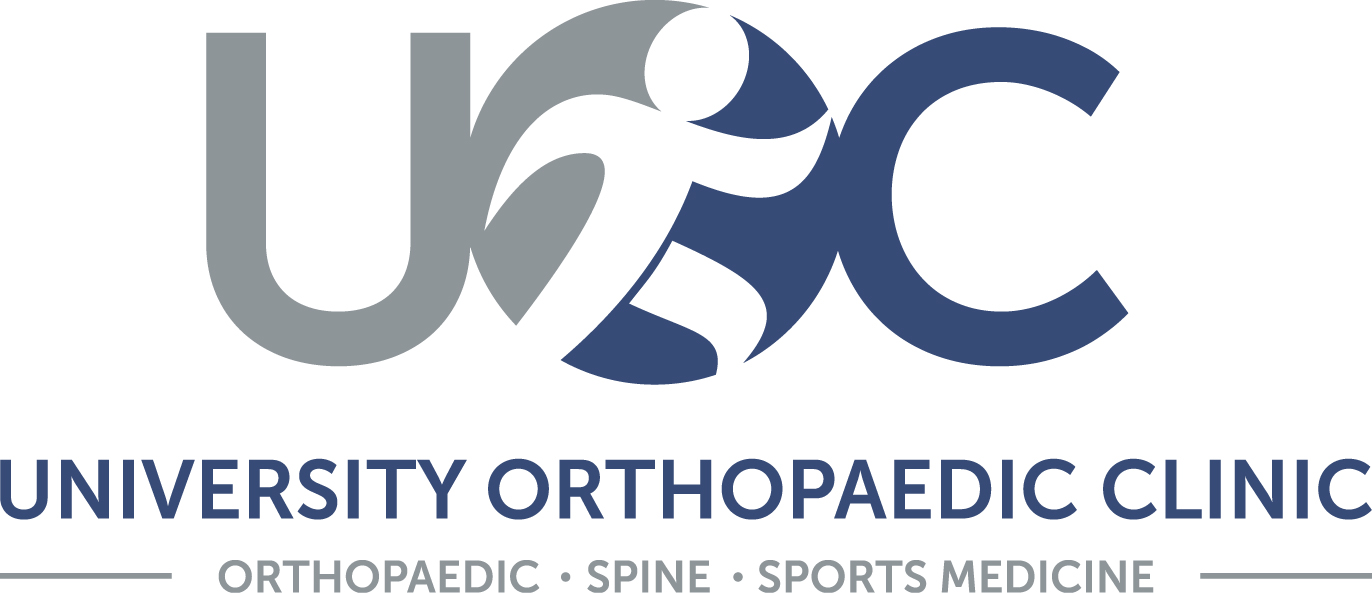Follow Us x
Spine Surgery
Lumber Spine Procedures
The lumbar spine refers to the lower area of the spine between the pelvis and thoracic cage. It is made up of 5 vertebrae (although some people may have 6) that are stacked on top of each other with cushion-like intervertebral discs in between. The lower back is the largest movable segment of the vertebral column and is extremely vulnerable to disorders, making it the source of many pain complaints. At the University Orthopaedic Clinic & Spine Center, we are experienced in treating the many problems that arise from the lumbar spine.
Some of the conditions we treat include:
- Herniated Disc
- Lumbar Spinal Stenosis
- Lumbar Trauma
- Lumbar Vertebral Tumors
- Lumbar Deformity
» Contact us for more information about Lumbar Spine Procedures
Cervical Spine Procedures
The cervical spine (neck region) is one of the most important and agile parts of your body. It begins at the base of the skull and consists of 7 bones separated by intervertebral discs that allow the spine to move freely. The neck has the greatest amount of movement of any area of the spine and is also responsible for protecting the spinal cord and supporting the skull. Because of its vital function in our everyday lives, injury or disease of the cervical spine is a very serious condition. At the University Orthopaedic Clinic & Spine Center, we specialize in a variety of cervical spine procedures customized to treat your condition.
Some of the conditions we treat include:
- Herniated Disc and Degeneration
- Cervical Spinal Stenosis
- Cervical Trauma
- Cervical Vertebral Tumors
- Cervical Deformity
- Spinal Infections
» Contact us for more information about Cervical Spine Procedures
Thoracic Procedures
The thoracic spine is the section of spine found in the upper back. It is in between the cervical and lumbar spines, and stretches from the base of the neck to the bottom of the rib cage. The thoracic spine consists of 12 vertebrae, referred to as T1-T12. Each of these vertebrae are separated by an intervertebral disc, which connect the bones and allow for movement of the spine. The discs in the thoracic spine are thinner than those in the other parts of the spine, resulting in less movement of the upper back. However, the thoracic area is still sensitive to injury and disease. At the University Orthopaedic Clinic & Spine Center, we are experienced in treating every condition of the spine, from the minor to the severe.
Some of the conditions we treat include:
- Kyphosis
- Herniated Disc
- Thoracic Trauma
- Thoracic Vertebral Tumors
- Thoracic Vertebral Tumors
» Contact us for more information about Thoracic Spine Procedures
Microdiscectomy (Spinal Decompression)
Microdiscectomy, also known as microdecompression, is a minimally invasive procedure designed to relieve pain caused by certain spinal conditions, including:
- Disc bulge
- Disc herniation
- Spinal stenosis
- Spondylolisthesis (degenerative or isthmic)
- Sciatica
Although this procedure targets the nerves of the spinal cord, the pain alleviated is usually in the legs. A microdiscectomy is usually reserved for patients who do not respond to more conservative methods of pain relief. Surgery is usually performed within three to six weeks of the onset of pain.
The procedure allows for the herniated nucleus to be removed without fully visualizing the spine, as temporary repositioning of the back muscles and nervous membrane allow for small surgical tools and cameras to perform the operation with minimal soft tissue damage. In contrast to a laminectomy where the lamina is removed, the spine’s shape takes little to no change, as no bones are shifted whatsoever during this procedure.
A microdiscectomy is generally an outpatient procedure with a very fast rate of recovery. Although it is recommended to restrict certain spine-intensive activities, such as twisting, bending and lifting, the patient’s bone structure and tissue is completely unchanged and normal activity is quite feasible. The success rates vary between 90 and 95 percent with a relatively low recurrence rate of 5 to 10 percent, usually occurring in the first three months after surgery. If herniation reoccurs, the procedure may be repeated, although chances of continual recurrence will be much higher.
» Contact us for more information about Microdiscectomy (Spinal Decompression)
